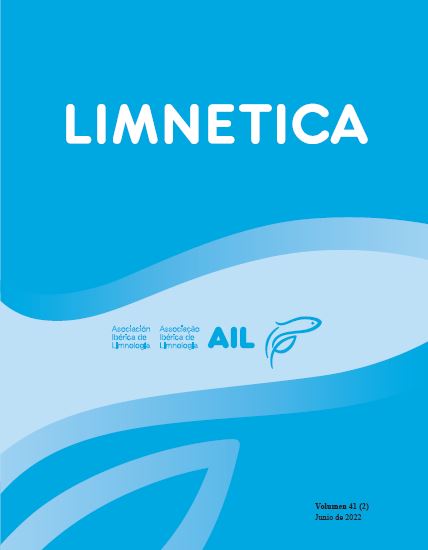Ceratium furcoides (Levander) Langhans in reservoirs at the Ebro watershed, Spain and Sao Paulo state, Brazil
Resum
This study compares the morphological characteristics of the dinoflagellate Ceratium furcoides from three Ebro basin reservoirs (Spain) and from six reservoirs at São Paulo state (Brazil) with the aim to identify the distinct morphotypes of Ceratium furcoides in Spain and Brazil. We studied the physical and chemical variables to determine the trophic state of each reservoir. Unlike Ceratium hirundinella, Ceratium furcoides is not a frequent species within the plankton community at Ebro Basin reservoirs, however, this species has been responsible of one monospecific bloom at El Val reservoir. Nevertheless, both Ce-ratium species are considered invasive in South America. Ceratium furcoides has displaced C. hirundinella at São Paulo state reservoirs, reaching high densities, to the extent of forming monospecific blooms. Morphometric analysis was performed by optic and electronic microscopy (DIC and SEM respectively). The analysis shows significant differences in: i) total cell length, ii) horns length and iii) presence or absence of a fourth horn. While the microscopic study allows differentiating morphotypes according to the reservoir typology, a deeper study using molecular genetic techniques on the different populations of C. furcoides would allow to know better the relationship between the dinoflagellate dynamics and the reservoirs trophic states.
Descàrregues
Publicades
Número
Secció
Llicència
Los autores que publican en esta revista están de acuerdo con los siguientes términos:
- Limnetica está bajo una licencia de Creative Commons Atribución-NoComercial 4.0 Internacional.
b. Los autores pueden establecer por separado acuerdos adicionales para la distribución no exclusiva de la versión de la obra publicada en la revista (por ejemplo, situarlo en un repositorio institucional o publicarlo en un libro), con un reconocimiento de su publicación inicial en esta revista.
c. Se permite y se anima a los autores a difundir sus trabajos electrónicamente (por ejemplo, en repositorios institucionales o en su propio sitio web) antes y durante el proceso de envío, ya que puede dar lugar a intercambios productivos, así como a una citación más temprana y mayor de los trabajos publicados (Véase The Effect of Open Access) (en inglés).


